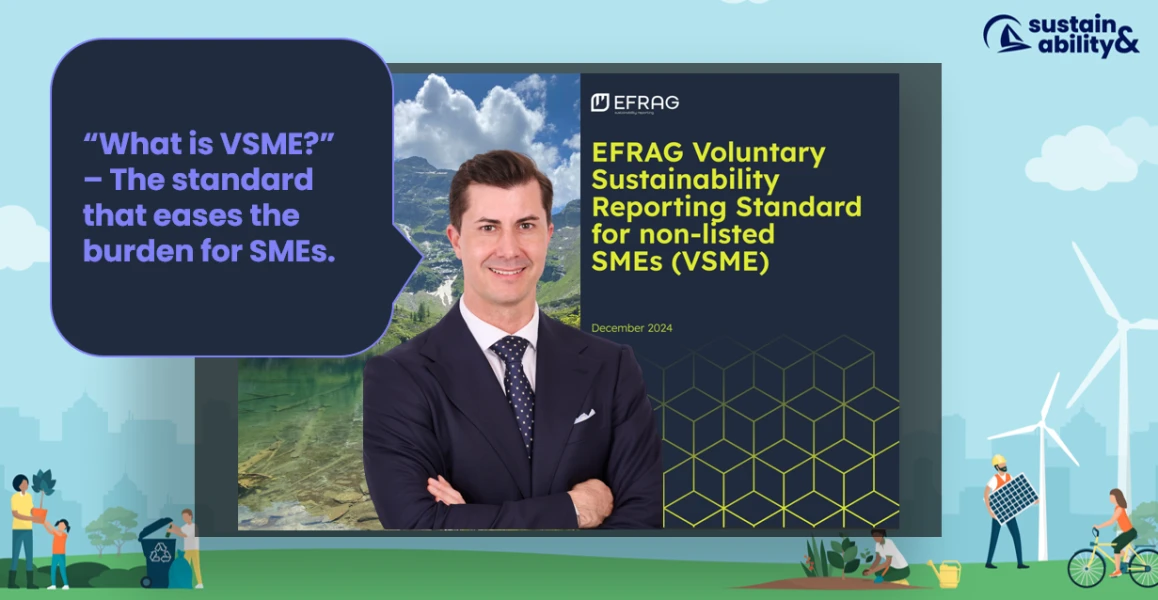What is VSME? The New Standard for Sustainability Reporting in the Mid-Market

Sustainability reporting requirements are rising, and many mid-sized companies are rightfully asking: What is VSME, and does it apply to us? In this article, we provide an overview of what lies behind the term, why VSME is particularly relevant for mid-sized companies and their financing banks in Austria and Central Europe, and what developments at national and European levels are contributing to this relevance.
What is VSME? A Quick Explanation
VSME stands for "Voluntary Sustainability Reporting Standard for small and medium sized Enterprises" and is a reporting standard developed by EFRAG specifically tailored to the needs of small and medium-sized enterprises (SMEs). It is voluntary, modular in structure, and aims to make reporting requirements practical and cost-effective.
The VSME initiative emerged in the context of the EU’s Corporate Sustainability Reporting Directive (CSRD) and the associated ESRS standards. Its goal is to “avoid burdening SMEs with uncoordinated questionnaires and instead systematically address sustainability challenges and development needs”¹.
Who Is VSME For?
What is VSME in terms of target groups? According to EFRAG, VSME is primarily intended for companies with fewer than 250 employees but can also be voluntarily used by larger mid-sized firms. Especially companies with annual revenues between EUR 30 and 500 million benefit from it, as they are increasingly required to provide ESG information to banks, investors, or customers but are not covered by the CSRD.
Why Banks Pay Attention to VSME
Banks face the challenge of making the sustainability risks of their credit portfolios transparent. Supervisory authorities are increasingly demanding the integration of ESG risks into ICAAP and ILAAP processes². What is VSME from a bank’s perspective? A practical standard for systematically collecting ESG data from corporate clients. This supports risk analysis, reduces information asymmetries, and facilitates forward-looking lending decisions.
What is VSME in Light of Current EU Developments?
As part of the so-called Omnibus Package, the EU Commission has announced plans to significantly simplify ESRS reporting requirements—especially for smaller companies. “The goal is a 66% reduction in data points and a clearer distinction between mandatory and voluntary disclosures”³. VSME is an integral part of this simplification agenda and is seen as a response to the criticism of ESRS complexity.
Opportunities & Challenges
Opportunities:
Structured entry into sustainability reporting
Improved financing conditions through transparent ESG information
Risk management and strategic market positioning
Challenges:
Initial effort for first-time reporting
Need for external guidance and support
Internal data availability and clear responsibilities
Conclusion: What is VSME? A Tool for Pragmatic and Effective Sustainability Communication
For many mid-sized companies and their financiers, VSME is more than just a new reporting standard: it is a pragmatic tool for systematic ESG integration that helps maintain clarity, prepare for regulatory trends, and secure competitive advantages.
Those who now understand what VSME is and engage with it early can not only mitigate regulatory risks but also position themselves more strategically in the market.
Footnotes:
EFRAG, "VSME in Action", April 2025
Maul, Lorentz: "ESG Risks in Focus of ICAAP and ILAAP", 2025
EFRAG, "Draft Amended ESRS Exposure Draft", July 2025